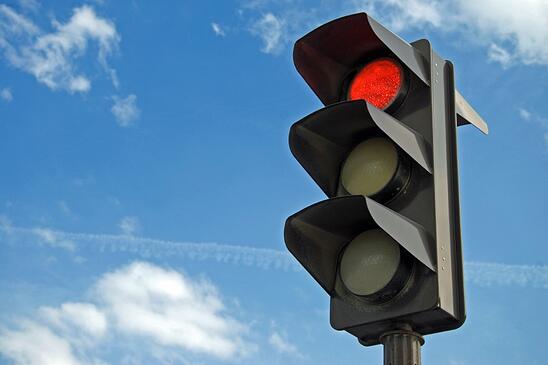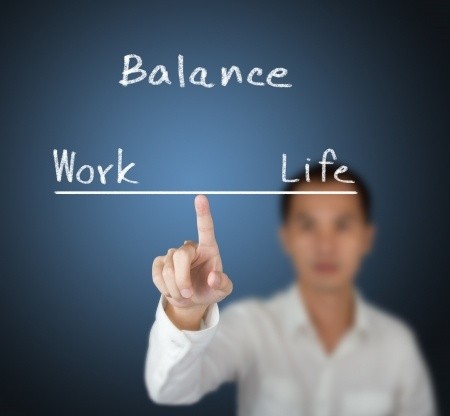
The traditional measuring stick of productivity has been endurance—whoever can work the longest or send emails at 2 in the morning. It’s based on a flawed notion that in the knowledge economy where brainpower rules that a fatigued brain is where it’s at for getting things done.
In fact, MRI scans of fatigued brains look exactly like ones that are sound asleep. The chief productivity tool is attention, and that goes AWOL after three hours of continuous time on task, studies show (Boksem, Meijman, Lorist).
PREREQUISITE OF PERFORMANCE
Productivity comes from a very different place than burnout and fatigue, from the opposite place than we have been led to believe—from brains that are refreshed and energized. And where do those come from?
The data tells us from organizations that take work-life balance seriously. It turns out that work-life balance is much more than a check-off box on an employee survey. It’s the prerequisite for work performance and engagement. It gives employees the tools and encouragement to work more effectively, to take care of their health, improve skills, and work in a way that makes them feel valued.
People who feel they have good work-life balance work 21% harder than those who don’t, reports the Corporate Executive Board, which represents about 80% of the Fortune 500. Gallup found that engaged employees are 28% more productive than those who aren't engaged. But only 29% of workers are engaged. American businesses leave more than $300 billion on the table in lost productivity every year due to disengaged employees.
Naturally, every company wants employee engagement, which means that employees put forth discretionary effort beyond the call of duty. What makes an employee do more than what's necessary? Certainly not a fatigued brain. The key dimension of engaged employees is energy, vigor.
That can’t come from people who are following the Burnout Model of productivity. The main marker of burnout and chronic stress is exhaustion, the polar opposite of engagement. All energetic resources have been depleted—mentally, physically, emotionally.
THE FOCUS MODEL
It’s time for a new performance model, one that’s actually based on what the science says works. Let’s trade exhaustion for the Sustainable Performance Model and focused attention. The goal is to eliminate the bottlenecks that drain attention and engagement through things such as interruption and information management, making operations more effective and less aggravating with better time management, managing demands, refueling the brain, and allowing employees the sense that they can take adequate care of responsibilities outside the office.
In other words, make work-life balance an integral part of the operations and workflow of the team or organization. When the goal is working in a way that strengthens attention, well-being, trust, communication, wellness, and value, it doesn’t take a brain scientist to see that people are more inclined to give not just their all, but more than that, the discretionary effort of employee engagement.
Work-life balance sets the stage for engagement, making employees feel valued, competent, trusted, and that they are a part of the mission, participants, not just cogs. Companies with high participation levels have a 19% higher return on investment, a study by Edward Lawler found.
Every company should want their employees to have better work-life balance, since that leads to the energy, commitment, and involvement that creates engagement. Every company should want their employees to have better self-management and be more proactive. When they are, we can delegate more, more ideas come forward, better communication reduces conflict, and we eliminate stress levels that fuel turnover (40% of people who quit cite stress as the main factor in leaving) and bad decisions.
THE MILLENNIAL CHALLENGE
The Burnout Model leads to ill and drained employees who are there physically but mentally depleted—the condition known as presenteeism, which costs U.S. companies more than $150 billion per year. The Sustainable Performance Model produces team members whose brains are energized and focused on going the extra mile. Which is the better choice?
As a new generation that prizes work-life balance starts to play a bigger role in the workplace, the timing has never been better to integrate a comprehensive work-life program in every organization. There is a tectonic shift in corporate culture under way led by millennials and their values, and the Sustainable Performance Model of work-life balance can lead the way. It’s a no-brainer for millennials—for productivity, commitment, wellness, and satisfaction.
How do you get started? Start with our comprehensive employee Work-Life Balance training that brings the strategies of the latest science to help your team work smarter and live better. We also offer a follow-up program that sustains the new behaviors, builds in new protocols and norms, and identifies challenges and solutions. Aftwards, everyone wonders why they didn't do this years ago. Let common sense and work-life balance demonstrate that there's another road to success, instead of one that is best described by an old Monty Python routine, "Being Hit on the Head Lessons."
If you would like more information, please click on the button below for details and rates on our programs.












